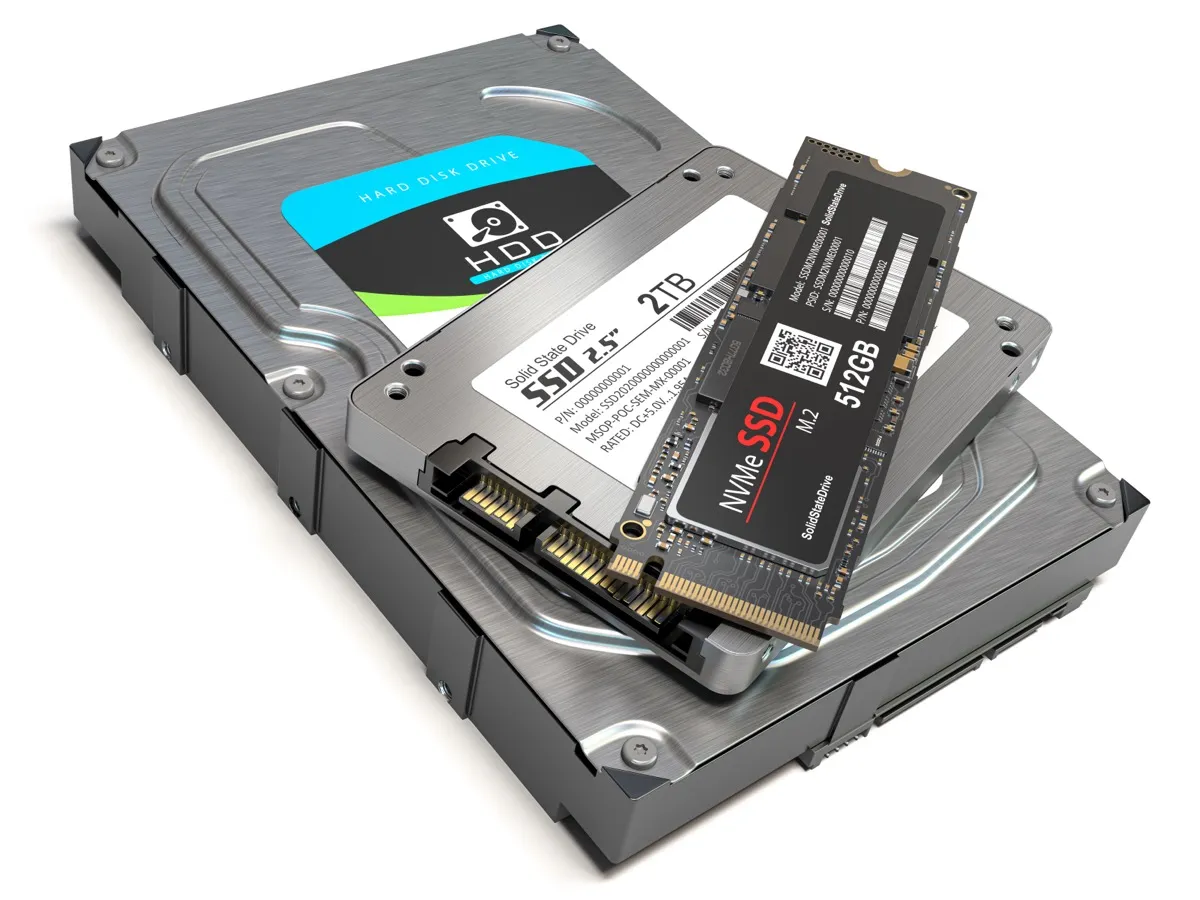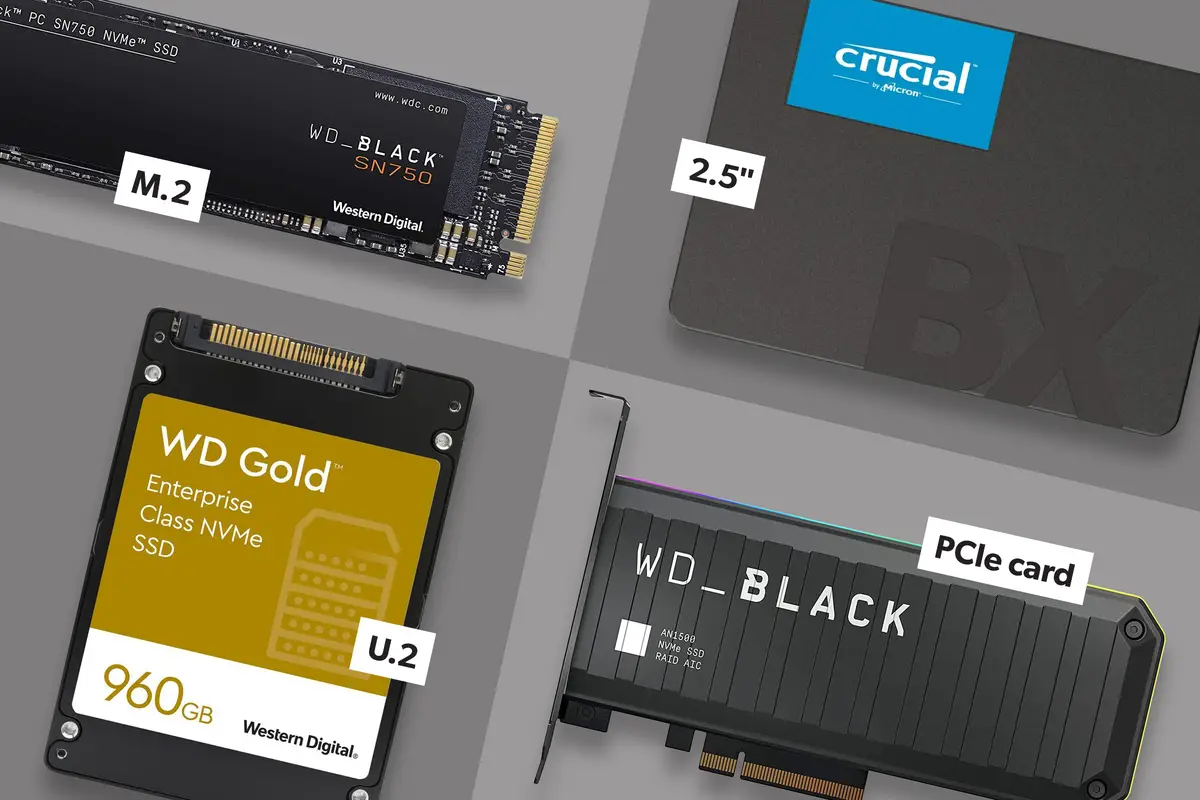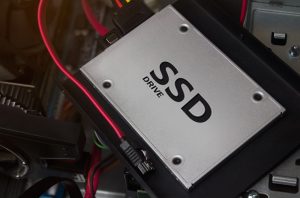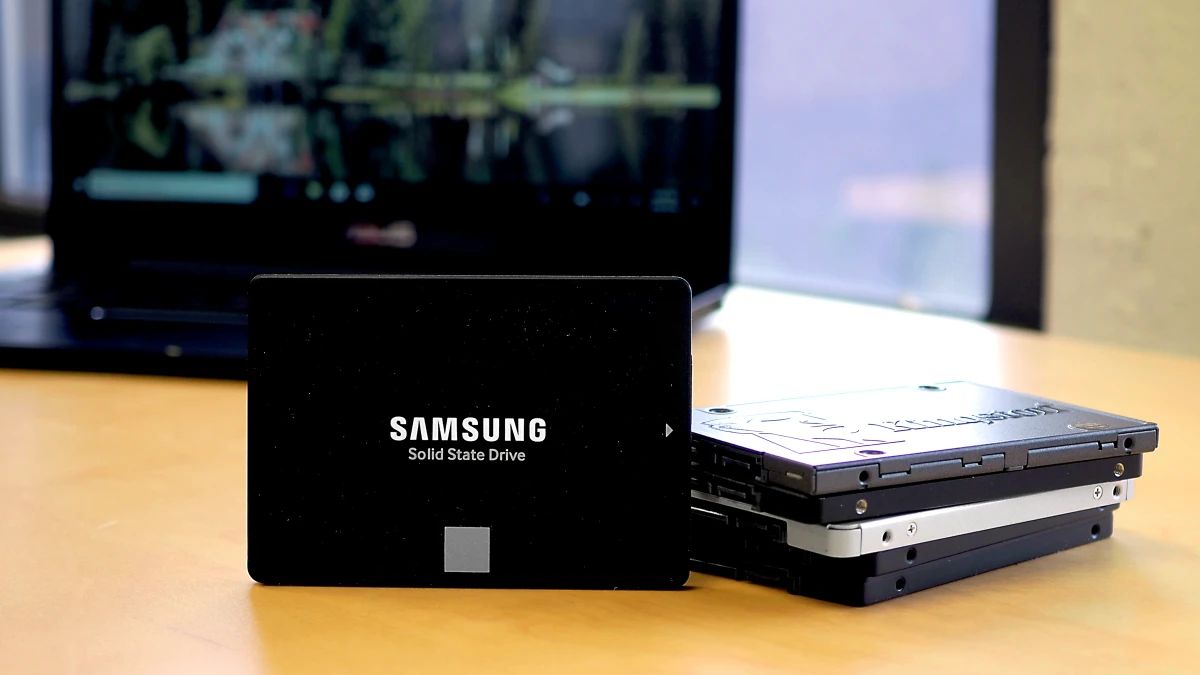Why it’s important to know what kind of SSD you have
Solid State Drives (SSDs) have become increasingly popular thanks to their faster performance, improved reliability, and compact design. Whether you are using an SSD as your primary storage device or as an additional external drive, knowing the specific type of SSD you have is essential.
One of the main reasons why it is important to know what kind of SSD you have is compatibility. Different SSD types require specific connectors or interfaces to function properly. By identifying the exact type of SSD you own, you can ensure that it is compatible with your computer or other devices.
Another reason to be aware of your SSD’s specifications is to optimize its performance. SSDs come in various configurations, such as SATA, PCIe, or NVMe. Each type has different data transfer rates and latency levels. By knowing the type of SSD you have, you can maximize its potential by utilizing the appropriate settings, drivers, and firmware updates.
Knowing the storage capacity of your SSD is also crucial for managing your data effectively. It allows you to assess how much space you have available for storing files, applications, and operating systems. This knowledge helps you avoid running out of storage and enables you to plan for future upgrades or expansions.
Identifying the brand and model of your SSD assists in troubleshooting and obtaining support. If you encounter any issues with your SSD, knowing the manufacturer and model number will make it easier to find specific troubleshooting guides, firmware updates, or contact customer support.
Furthermore, being aware of your SSD’s specifications facilitates future upgrades or replacements. If you plan to upgrade your system or replace your SSD with a higher-capacity or faster model, knowing the current SSD’s specifications allows you to make informed decisions when choosing a new one.
In summary, knowing what kind of SSD you have is essential for compatibility, performance optimization, storage management, troubleshooting, and future upgrades. It empowers you to make informed decisions about your storage device, ensuring seamless functionality and a smoother user experience.
Checking your SSD type on Windows
If you are using a Windows computer and want to determine the type of SSD you have installed, there are a few methods you can try:
- Device Manager: Open the Start menu, type “Device Manager,” and click on the top result. In Device Manager, expand the “Disk drives” category to see a list of installed drives, including your SSD. Right-click on the SSD and select “Properties.” In the Properties window, go to the “Details” tab, and from the drop-down menu, select “Hardware Ids.” Look for the information that indicates the SSD’s type or model.
- System Information: Press the Windows key + R to open the Run dialog box. Type “msinfo32” and press Enter. The System Information window will open. In the left panel, navigate to “Components” > “Storage” > “Disks.” Look for your SSD in the list of disks. The model and type information will be displayed in the right panel.
- Third-Party Software: There are several third-party applications available that can provide detailed information about your SSD. One popular option is CrystalDiskInfo. Download and install CrystalDiskInfo, then launch the program. It will display information about your SSD, including the interface type, health status, and firmware version.
These methods will help you determine the type of SSD you have installed on your Windows computer. Once you have this information, you can proceed with optimizing its performance, managing storage, or troubleshooting any issues that may arise.
Checking your SSD type on macOS
If you are using a Mac and want to find out the type of SSD installed on your device, here are a few methods you can use:
- About This Mac: Click on the Apple menu in the top-left corner of the screen and select “About This Mac.” In the Overview tab, click on “System Report.” In the left sidebar, navigate to “Hardware” > “SATA/SATA Express.” Look for your SSD in the list and note down the manufacturer and model information.
- Terminal: Open the Terminal application by going to Applications > Utilities > Terminal. Type the following command and press Enter:
system_profiler SPNVMeDataType. This command will provide you with detailed information about NVMe-based SSDs connected to your Mac, including the manufacturer, model, and firmware version. - Third-Party Software: Another option is to use third-party software like DriveDx. Download and install DriveDx, then launch the application. It will detect and display information about the SSDs connected to your Mac, including their interface type, health status, and other relevant details.
By using these methods, you can easily identify the type of SSD installed on your macOS device. Whether it’s a SATA-based SSD or an NVMe drive, knowing the specific details will help you make informed decisions regarding storage management, performance optimization, and troubleshooting.
Checking your SSD type on Linux
If you are using a Linux-based operating system and need to determine the type of SSD installed on your system, there are several methods you can try:
- lsblk command: Open a terminal and run the command
lsblk. This command lists the block devices on your system, including your SSD. Look for your SSD in the output and note down the device name. Then run the commandsudo hdparm -I /dev/sdX, replacing “sdX” with the device name of your SSD. This command will provide detailed information about the SSD, including the interface type and supported features. - smartctl command: Open a terminal and run the command
sudo smartctl --all /dev/sdX, replacing “sdX” with the device name of your SSD. This command will display the SMART (Self-Monitoring, Analysis, and Reporting Technology) information for your SSD, including the model, firmware version, and supported features. - Gnome Disks: If you are using a Linux distribution with the GNOME desktop environment, you can use the “Disks” utility. Open the “Disks” application, select your SSD from the list of drives, and click on the settings icon. From the drop-down menu, choose “SMART Data & Self-Tests” to view detailed information about your SSD, including the interface type and health status.
By using these methods, you can easily identify the type of SSD installed on your Linux system, whether it’s a SATA-based drive or an NVMe SSD. This information is crucial for optimizing performance, managing storage, and troubleshooting any issues that may arise with your SSD.
How to determine the interface of your SSD
Knowing the interface of your SSD is essential for understanding its compatibility and performance capabilities. Here are some methods to determine the interface of your SSD:
- Physical Inspection: The most straightforward way to determine the interface of your SSD is by physically examining it. If your SSD is installed internally, you may need to open your computer or laptop and locate the SSD. Look for the connector that the SSD uses to connect to the motherboard. SATA-based SSDs typically use a thin and flat connector with two L-shaped notches. NVMe SSDs, on the other hand, utilize a smaller, more compact M.2 connector (in most cases), which may have several different key types to ensure proper alignment.
- Manufacturer’s Specifications: Check the manufacturer’s specifications or documentation for your SSD. The product manual or the manufacturer’s website usually provides detailed information about the interface type of the SSD. Look for terms like “SATA,” “PCIe,” “NVMe,” or “M.2” to identify the interface used by your SSD.
- System Information: On your computer, you can use system information tools to determine the SSD interface. On Windows, you can find this information in the Device Manager or System Information. On macOS, use the System Report utility. These tools typically provide detailed information about the connected drives, including the interface type.
- Third-Party Software: There are various third-party software applications available that can provide detailed information about your SSD, including the interface type. Some popular options include CrystalDiskInfo for Windows and DriveDx for macOS. These applications can display the interface type, along with other important details about your SSD.
By utilizing these methods, you can easily determine the interface of your SSD, whether it’s SATA, PCIe, NVMe, or another supported type. This knowledge will help you ensure compatibility with your system and make informed decisions regarding performance optimization, data storage, and future upgrades or replacements.
How to find out the storage capacity of your SSD
Knowing the storage capacity of your SSD is crucial for managing your data effectively and planning for future storage needs. Here are some methods to find out the storage capacity of your SSD:
- System Information: On Windows, you can check the storage capacity of your SSD through the Device Manager or the System Information tool. In Device Manager, expand the “Disk drives” category and find your SSD. Right-click on it and select “Properties” to view the storage capacity. In System Information, navigate to “Components” > “Storage” > “Disks” to find the capacity of your SSD.
- About This Mac: If you are using a Mac, you can easily find the storage capacity of your SSD through the “About This Mac” option. Click on the Apple menu in the top-left corner of the screen and select “About This Mac.” In the Overview tab, you will see the storage capacity mentioned next to your SSD.
- File Explorer/Finder: Another way to determine the storage capacity of your SSD is through the File Explorer on Windows or the Finder on macOS. Open the respective file browser and locate your SSD in the list of drives. Right-click on it and select “Properties” on Windows or “Get Info” on macOS. The storage capacity will be displayed in the properties window.
- Manufacturer’s Specifications: The manufacturer’s documentation or website usually provides information about the storage capacity of their SSD models. Refer to the product manual or visit the manufacturer’s website to find the storage capacity of your specific SSD model.
By using these methods, you can easily find out the storage capacity of your SSD. This knowledge will help you better manage your data, determine available space for storing files and applications, and plan for future storage requirements.
How to identify the brand and model of your SSD
Identifying the brand and model of your SSD is important for obtaining support, finding firmware updates, and troubleshooting any issues that may arise. Here are some methods to identify the brand and model of your SSD:
- Physical Inspection: If your SSD is installed internally, you can open your computer or laptop and locate the SSD. Look for any visible branding or labels on the SSD itself. The manufacturer’s logo or the SSD model number may be imprinted on the SSD’s casing, making it easy to identify the brand and model.
- System Information: On both Windows and macOS, you can use system information tools to determine the brand and model of your SSD. On Windows, open the Device Manager or System Information and locate your SSD. Right-click on the SSD and select “Properties” to view detailed information, including the manufacturer and model. On macOS, access the “About This Mac” option, navigate to the System Report, and find the details of your SSD under the Storage section.
- Manufacturer’s Documentation: Check the manufacturer’s documentation or visit their website to find information about their SSD models. The product manual or the manufacturer’s website will often list the different models, including their specifications, allowing you to match the specifications of your SSD to identify the specific brand and model.
- Third-Party Software: Utilize third-party software applications that are designed to provide detailed information about your computer’s hardware. Applications like CrystalDiskInfo for Windows and DriveDx for macOS can detect and display information about the connected SSDs, including the brand and model.
By using these methods, you can easily identify the brand and model of your SSD. This knowledge will help you find specific support resources, obtain firmware updates, and troubleshoot any issues you may encounter with your SSD.
How to check the performance specifications of your SSD
Checking the performance specifications of your SSD is essential for understanding its capabilities and optimizing its performance. Here’s how you can check the performance specifications of your SSD:
- Manufacturer’s Documentation: Refer to the manufacturer’s documentation or visit their website to find detailed information about the performance specifications of your SSD. The manual or product page will typically include details such as read and write speeds, input/output operations per second (IOPS), and random or sequential performance.
- CrystalDiskMark: CrystalDiskMark is a popular benchmarking tool that can measure the performance of your SSD. Download and install CrystalDiskMark, then run the program. Select your SSD from the drop-down menu and click on the “Start” button to initialize the benchmark. The tool will measure and display various performance metrics, including sequential and random read/write speeds.
- ATTO Disk Benchmark: Another widely used benchmarking tool is ATTO Disk Benchmark. Download and install ATTO Disk Benchmark, then open the program. Select your SSD from the drop-down menu, choose the desired transfer size, and click on the “Start” button to initiate the benchmark. ATTO Disk Benchmark will measure and present the SSD’s performance in terms of read and write speeds at different block sizes.
- Manufacturer’s Storage Utilities: Some SSD manufacturers provide proprietary storage utility software that includes performance testing and optimization features. Visit the manufacturer’s website and download their utility software for your SSD model. Launch the software and explore its features to access performance information specific to your SSD.
- Third-Party Reviews: Look for reputable technology websites that conduct SSD reviews and performance tests. These reviews often include detailed performance measurements and comparisons with other SSD models. Reading these reviews will help you gain insights into the performance capabilities of your SSD.
By utilizing these methods, you can check the performance specifications of your SSD, including read and write speeds, IOPS, and other relevant metrics. Having a clear understanding of your SSD’s performance capabilities will enable you to optimize its performance, assess its suitability for specific tasks, and make informed decisions for your storage needs.

























